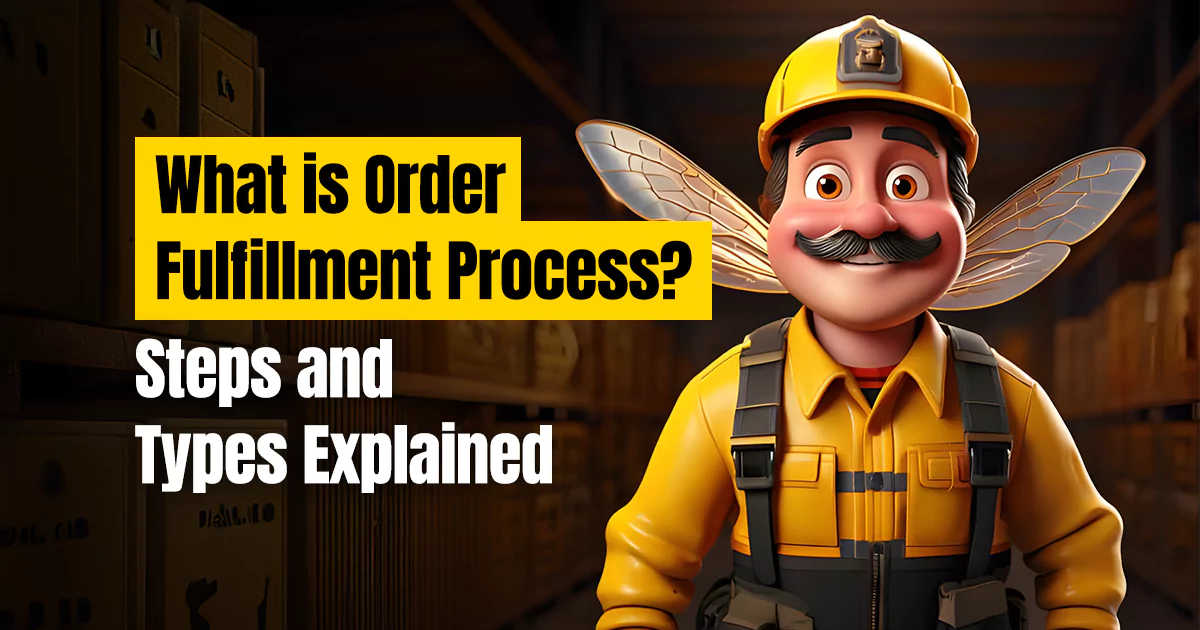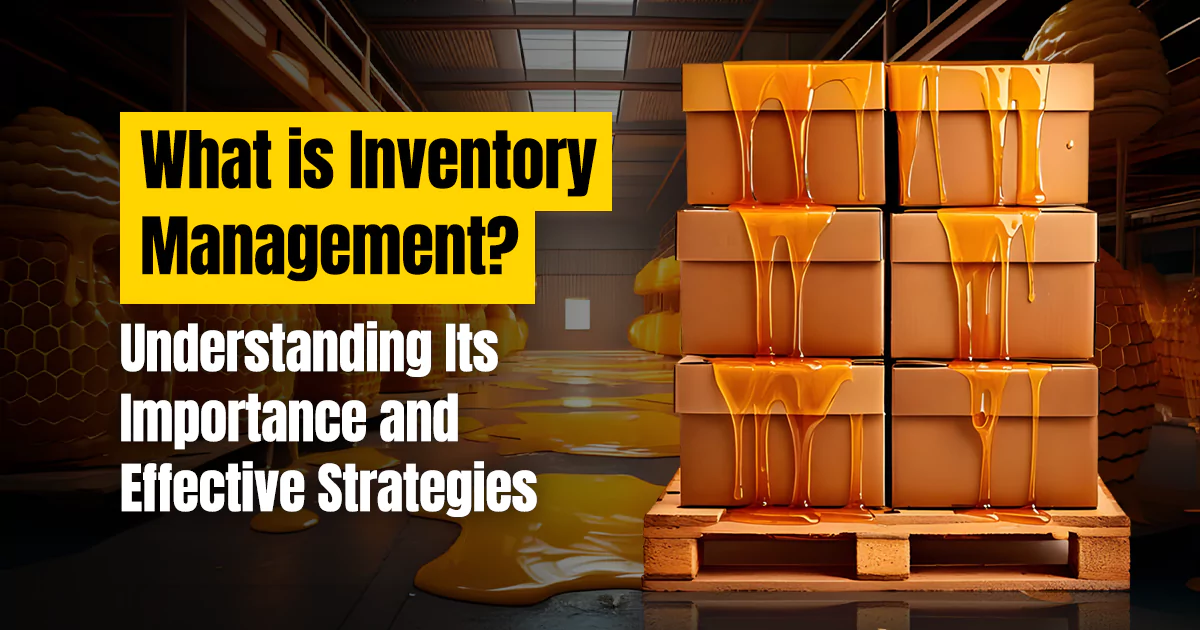What is order fulfillment process? It is a vital component for any business that sells products. This process refers to the series of steps businesses take to process and deliver customer orders accurately and on time. A clear understanding of the order fulfillment process is crucial for businesses to streamline operations, meet customer expectations, and foster loyalty.
In this article, we will explore the key aspects of the order fulfillment process, including its steps and different order fulfillment types. Whether your business operates in e-commerce, retail, or another industry, this guide offers valuable insights to optimize your fulfillment operations and enhance efficiency.
From order placement and inventory management to pick-and-pack operations and shipping, we will examine each stage in detail. By mastering the intricacies of order fulfillment, businesses can minimize errors, increase productivity, and deliver exceptional customer experiences.
Join us as we dive into the world of order fulfillment, uncovering the process steps, best practices, and strategies for seamless execution, ensuring your business stays competitive in today’s fast-paced market.
Importance of Order Fulfillment for Businesses
Order fulfillment is crucial for any business that sells products, as it directly influences customer satisfaction and loyalty. When customers place an order, they expect prompt and accurate delivery. A streamlined ecommerce order fulfillment process ensures these expectations are met, distinguishing a business from its competitors, especially in today’s fast-paced digital marketplace. In today’s fast-paced e-commerce landscape, efficient fulfillment services can drive sales and foster lasting customer relationships.
Operational efficiency is another significant benefit of effective order fulfillment. By optimizing order fulfillment process steps, businesses can reduce costs related to inventory management, shipping, and handling. These savings allow organizations to reinvest resources into growth and innovation, staying agile in a market where customer preferences shift rapidly. A well-organized fulfillment process is essential for adapting to these changes and maintaining a competitive edge.
Beyond logistics, a reliable order fulfillment process enhances a brand’s reputation. Accurate and punctual deliveries lead to positive reviews and word-of-mouth marketing. For businesses working with platforms like Amazon, understanding What is a Marketplace Prep Center? How Do They Work? can provide valuable insights into simplifying inventory preparation and ensuring seamless fulfillment.
Efficient order fulfillment services not only improve customer satisfaction but also strengthen brand loyalty and expand market reach, making it indispensable for long-term success.
What is Order Fulfillment Process? Key Steps Explained
The order fulfillment process consists of several essential steps, each designed to ensure that customer orders are The ecommerce order fulfillment process consists of several essential steps, each designed to ensure that customer orders are handled efficiently and effectively. Understanding the process steps provides clarity about the order fulfillment meaning and how it applies to different business models. By understanding and optimizing these steps, businesses can improve customer satisfaction and operational efficiency. Below is a breakdown of the key order fulfillment process steps:
- Order Placement
Customers browse products, add them to their shopping cart, and finalize their purchase through checkout. Ensuring a seamless and user-friendly interface at this stage is critical for a smooth experience. Accurate inventory visibility prevents overselling and builds trust. - Order Processing
This phase involves verifying order details, confirming payments, and preparing the order for the next steps. Automation tools can minimize errors and reduce processing time, helping businesses keep up with demand. - Picking
Warehouse staff locate the ordered items from inventory. Efficient inventory management systems streamline this step, ensuring accuracy and speed. - Packing
Products are securely packaged to protect them during transit. High-quality packaging not only prevents damage but also enhances the customer experience. - Shipping and Delivery
Orders are handed off to a shipping carrier for delivery. Real-time tracking systems are essential to keep customers informed and maintain transparency.
Each of these steps contributes to the overall success of the order fulfillment process. Businesses looking to enhance their fulfillment strategies can leverage advanced ecommerce fulfillment services to improve accuracy and efficiency.
Order Fulfillment Types – Dropshipping, In-House Fulfillment, and Third-Party Fulfillment
Choosing the right order fulfillment types is a critical decision for businesses. Each method has distinct advantages and challenges, making it essential to evaluate which aligns best with your operational goals. Here’s a breakdown of the most common fulfillment methods:
- Dropshipping
- How It Works: The retailer does not keep inventory. Instead, customer orders are forwarded to the supplier, who ships products directly to the customer.
- Pros: Low startup costs, no inventory storage, and flexibility to offer a wide product range.
- Cons: Limited control over shipping times and quality, and often lower profit margins.
- In-House Fulfillment
- How It Works: Businesses handle storage, picking, packing, and shipping independently.
- Pros: Full control over the fulfillment process, better quality assurance, and personalized customer service.
- Cons: High operational costs due to warehouse space, staff, and logistics infrastructure.
- Third-Party Fulfillment (3PL)
- How It Works: Businesses outsource the order fulfillment process to a third-party logistics provider.
- Pros: Scalability, faster shipping times, and reduced operational burden.
- Cons: Dependency on the provider, potential communication issues, and quality inconsistencies. Learn more in our Guide to Third-Party Logistics.
Understanding these different types of order fulfillment helps businesses make informed decisions that align with their goals and resources.
How to Optimize Your Order Fulfillment Strategy
Optimizing your order fulfillment strategy requires a combination of clear planning, leveraging technology, and regularly refining processes to adapt to evolving business needs. Here are actionable steps to enhance your fulfillment operations:
- Streamline Processes
Map out each step of your order fulfillment process—from order placement to shipping—and identify areas where bottlenecks or errors occur. Simplifying these processes can reduce delays and improve overall efficiency. - Leverage Technology
Use inventory management systems (IMS) and order management systems (OMS) to track inventory levels, automate order processing, and ensure seamless communication between teams. Real-time tracking tools can also enhance transparency for both businesses and customers. - Improve Inventory Accuracy
Regular inventory audits and integrating advanced tools like barcode scanners or RFID systems can minimize errors. Maintaining accurate stock levels reduces the risk of overselling or stockouts. - Enhance Packaging and Shipping
Invest in durable, eco-friendly packaging materials that protect products during transit. Partner with reliable carriers and negotiate rates to ensure timely deliveries without overspending. - Monitor Performance Metrics
Track key performance indicators (KPIs) such as order accuracy, shipping times, and customer feedback. Use these insights to continuously refine your fulfillment strategy and address areas needing improvement.
By proactively optimizing your fulfillment strategy, businesses can rely on order fulfillment services to improve customer satisfaction, reduce operational costs, and position themselves for long-term success.
Choosing the Right Order Fulfillment Strategy for Your Business
Selecting the right order fulfillment strategy is essential for achieving efficiency and customer satisfaction. The first step is assessing specific business needs, including order volume, product types, and customer expectations. For small businesses or startups, dropshipping can be an ideal solution, offering minimal overhead and eliminating the need for inventory management. As businesses grow, transitioning to in-house fulfillment or partnering with a third-party logistics provider (3PL) may become necessary to handle higher order volumes and maintain service quality.
Another critical factor is the target market. Businesses catering to customers who expect rapid delivery and personalized service may find that in-house fulfillment provides better control and customization. Conversely, companies aiming to expand product offerings without the risk of excess inventory might prefer the flexibility of dropshipping. For businesses with larger operations or global reach, third-party fulfillment offers scalability and efficiency, making it an excellent choice for serving diverse markets.
Finally, financial resources and technological capabilities play a crucial role. In-house fulfillment requires significant investment in infrastructure and staff, while dropshipping typically involves lower upfront costs but reduced control. Partnering with a scalable 3PL or implementing advanced in-house systems can streamline operations, enhance efficiency, and support long-term growth. By carefully evaluating these factors, businesses can choose a fulfillment strategy that aligns with their goals and resources.

Technology and Tools for Efficient Order Fulfillment
In today’s digital landscape, leveraging technology is essential for maintaining efficiency and accuracy in the order fulfillment process. Advanced tools help businesses streamline operations, reduce costs, and enhance customer satisfaction.
- Inventory Management Systems (IMS)
IMS tools enable businesses to track stock levels, manage reorders, and ensure products are available when customers place orders. These systems prevent stockouts and overstock situations by aligning inventory with demand. Real-time visibility into stock levels reduces manual errors and improves operational efficiency. - Order Management Systems (OMS)
OMS software automates the entire fulfillment process, from order processing to generating shipping labels. Integrating OMS with IMS provides businesses with real-time updates and actionable insights, allowing for better decision-making and seamless operations. - Shipping Software
Logistics platforms optimize shipping by comparing carrier rates, automating label creation, and offering tracking capabilities. This not only reduces shipping costs but also improves delivery times, enhancing the overall customer experience. - Customer Communication Tools
Systems that provide order tracking and delivery updates keep customers informed and build trust. Offering a self-service portal for tracking orders can further improve customer satisfaction.
Investing in these technologies allows businesses to stay competitive, minimize errors, and focus on strategic growth. By integrating the right tools, companies can create a seamless and efficient order fulfillment process that supports both their operational and customer-centric goals.
Common Challenges in the Order Fulfillment Process and How to Overcome Them
The order fulfillment process is not without its challenges, many of which can affect customer satisfaction and The order fulfillment process is not without its challenges, many of which can affect customer satisfaction and operational efficiency. Identifying and addressing these issues is crucial for maintaining a seamless fulfillment workflow. Below are common challenges and strategies to overcome them:
- Inaccurate Inventory Management
Mismanaged inventory can lead to stockouts, overselling, or overstocking, all of which disrupt operations and disappoint customers.- Solution: Implement robust inventory management systems that provide real-time visibility into stock levels. Regular audits and reconciliations ensure accuracy and prevent discrepancies.
- Shipping Delays
Delays caused by carrier issues, weather conditions, or demand surges can harm customer trust.- Solution: Partner with reliable shipping carriers and maintain clear communication channels. Offer multiple shipping options to provide flexibility and set accurate delivery expectations. Contingency plans can also help mitigate unforeseen disruptions.
- Rising Operational Costs
Increasing costs for labor, storage, and transportation can strain profitability.- Solution: Leverage automation tools to reduce manual tasks and improve efficiency. Outsourcing to third-party logistics providers (3PL) can also help streamline operations and reduce overhead.
- Scaling with Demand
Sudden spikes in order volume, such as during the holiday season, can overwhelm existing resources.- Solution: Adopt scalable fulfillment strategies, such as partnering with a 3PL or using flexible warehouse space to manage fluctuating demand.
- Maintaining High Customer Service Levels
Growing order volumes can make it challenging to sustain personalized service.- Solution: Use customer relationship management (CRM) tools to track preferences and interactions. Proactive communication, such as tracking updates and delivery notifications, builds trust and loyalty.
By addressing these challenges with the right tools and strategies, businesses can create a resilient order fulfillment process that meets customer expectations and supports sustainable growth.
Order Fulfillment Best Practices
Implementing best practices in the order fulfillment process can significantly improve efficiency, accuracy, and customer satisfaction. By adopting these proven strategies, businesses can streamline operations and enhance overall performance:
- Establish Standard Operating Procedures (SOPs)
Clearly defined SOPs ensure consistency across all fulfillment stages. Documenting these procedures helps team members understand their roles and responsibilities, reducing errors and improving collaboration. Regularly update SOPs to align with changing business needs. - Leverage Automation
Automate repetitive tasks such as order processing, inventory management, and shipping label generation. Automation reduces manual errors, saves time, and improves efficiency. Advanced tools like warehouse management systems (WMS) can optimize picking and packing workflows. - Focus on Inventory Accuracy
Conduct regular inventory audits to maintain accurate stock levels and prevent overselling or stockouts. Integrate inventory management systems (IMS) for real-time updates and better inventory tracking. - Enhance Packaging and Shipping
Use durable, eco-friendly packaging materials to ensure product safety during transit. Partner with reliable shipping carriers and offer multiple delivery options to meet customer expectations. - Collect and Act on Customer Feedback
Customer feedback is a valuable resource for identifying areas of improvement. Use surveys or reviews to gather insights and make necessary adjustments to enhance the fulfillment process.
By adhering to these best practices, businesses can build a more efficient and customer-centric order fulfillment process. This proactive approach not only improves operational performance but also strengthens customer loyalty and positions the business for sustainable growth.
Conclusion: Optimizing Your Order Fulfillment Process for Success
Optimizing the order fulfillment process is essential for businesses aiming to thrive in today’s competitive market. A well-designed fulfillment strategy not only meets customer expectations but also enhances operational efficiency, paving the way for sustainable growth.
By understanding the importance of fulfillment, businesses can identify key areas for improvement and implement strategies tailored to their unique needs. Whether you choose dropshipping, in-house fulfillment, or third-party logistics (3PL), aligning your fulfillment strategy with your business goals is critical. Each method offers distinct advantages, and the right choice depends on factors such as order volume, product types, and customer preferences.
Leveraging technology and automation tools like inventory and order management systems can streamline operations and minimize errors. Adopting best practices, such as maintaining accurate inventory levels, using efficient packaging solutions, and gathering customer feedback, ensures continuous improvement.
Ultimately, an optimized fulfillment process strengthens customer satisfaction and loyalty, driving long-term success. By staying proactive and adaptable, businesses can position themselves for growth, delivering exceptional service while staying ahead in a rapidly evolving marketplace.


